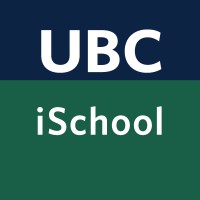| Note |
[Transcript] NATIVE
BROTHERHOOD
OF BRITISH COLUMBIA
The
Native Voice
In its 41st year of publication
VOL. 16, No. 4
August/Sept. 1988
NATIVE INDIAN EDUCATION
—A STUDENT'S PERSPECTIVE
The National Indian Education
Symposium II was held at Kahna-
wake Survival School, Quebec on
August 8, 9 and 10. The National In-
dian Education Forum called it “The
Eagle has Landed; A New Generation
Takes Flight."
That “New Generation" was a
noticeable force at Kahnawake. The
Inter-Campus Native Student Net-
work co-ordinated a B.C. Student
Delegation of six to participate in the
Symposium. They had an informa-
tion table which received significant
attention, as they gathered contacts
right across Canada. Beverly Scow
facilitated a Student Networking
Workshop in which over 20 students
participated from across Canada.
Beverly presented a paper “Native
Student Networking: Roles and
Potentials” for discussion. The en-
thusaistic dialogue was directed
towards action. The discussion was
around the questons of How? When?
There are strong student bodies in
Saskatchewan, Ontario and Alberta.
The energy and enthusiasm ex-
perienced at Kahnawake was inspir-
ing but it was made clear that the dif-
ficult part was to maintain the com-
munication to maintain that momen-
tum. Beverly Scow was identified as
the Communication Contact person.
c/o Inter-Campus Native Students
c/o Vancouver Indian Center
1607 East Hastings
Vancouver, B.C.
V5L 1S7
Each person of the B.C. Student
Delegation contributed to the success
of our venture and indicated the
potential force in the “New Genera-
tion," active participation in
workshops of Post Secondary Educa-
tion Policy, Drugs & Alcohol and
Student Networking.
Native students brought some valid
concerns to the attention of Political
Panel on Day Two of the Sym-
posium. Panelists included John
Rayner representing Indian and Nor-
thern Affairs. Notably, the students
questioned the “Consultation Pro-
cess” by INAC.
- The Policy states “1d) This policy
will come into effect as of April 1,
1989.” Is this a consultation pro-
cess or is this a preparation pro-
cess. John Rayner “says” it is a
tentative date.
- Did any Native people have input
into the Policy Draft and the Con-
sultation Questionnaire.
- The Questionnaire is biased and
was created in support of the
Policy. Native people are put into
a Catch 22 situation. If they re-
spond, answers can be misinter-
preted and if they do not respond
it would appear to indicate a lack
of interest.
- Is there a Native Review Commit-
tee to analyze the completed ques-
tionnaires and regional consulta-
tion reports.
- Time frame is inadequate - stated
consultation June-September.
However, consultation packages
were only sent to B.C. Bands in
mid-July and consultation ends in
mid-September. B.C. com-
munities fishing season and holi-
day season for educators.
On Day Three the National Indian
Education Forum was given a man-
date to continue and received recom-
mendations from workshops and the
floor discussion. From the B.C. stu-
dent delegation emerged a powerful
orator. Simon Lucas Jr. from
Nuuchah-nulth Tribal Council spoke
of the importance of culture, of his
pride for his parents and his heritage.
He spoke of the “New Generation"
and made reference to George Eras-
muses statement earlier this year.
His powerful voice commanded at-
tention and his message received due
response. The people of the floor ex-
pressed their support for the energy
expressed by Simon and encouraged
it to be channelled in constructive ac-
tivities.
They identified the need for Indian
culture to be a priority of the Na-
tional Indian Education Forum as
they strive for quality education. It
was recommended that students be a
part of the process and that Beverly
Scow be a member of the core group
as a student representative.
The B.C. Student Delegation is
commended as a group for their con-
Continued on next page
|
